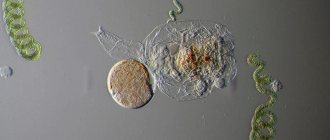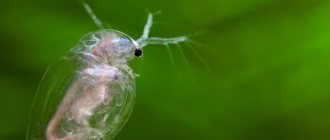Crinum or lily, as it is also called, is a beautiful plant that belongs to the Amaryllis family. The flower's homeland is tropical and subtropical lands .
The culture develops best on sea coasts, near lakes, rivers and reservoirs. In nature, there are many varieties of crinum, photos of which can be viewed below.
General information
Crinum (translated from Latin as “hair”) is a bulbous crop from the genus Amaryllis. In wildlife, it is found in subtropical and tropical areas, with high air humidity. It loves moist soil subject to periodic flooding, so it mainly grows on the banks of rivers and lakes and sometimes near the sea.
The flowering of the plant begins in spring and continues until the first months of autumn.
Krinum is a perennial; with proper care, the plant will continue to bloom for up to 10 years or more.
Watering
Physiological activity requires as much moisture as possible, but not cold water (from the tap). The urge to water is the dried top of the soil in a pot or outside.
Reduce watering after flowering. But the soil should still be moderately watered. Because the thickened nutrient system of crinum “works” in the same way as the roots of all trees - all year round.
Appearance
The linear or sword-shaped shape of the rather long leaves is very similar to hair, hence the interesting name. The hanging leaves can reach a length of up to 150 cm, but the young shoots resemble rolled green tubes. Sometimes a description of a flower is not enough; here the Internet comes to the rescue, where you can find a variety of photos of crinum.
The flowers of the crop are mostly monochromatic, collected in inflorescences of 15 to 20 pieces. The most common color is pink or white. Very often, flowers are confused with lilies or bells because of their similarity.
The root, in the shape of a bulb, can be up to 1 meter in length, with a small diameter of up to 25 cm.
When the flowering period ends, large seeds form in the seed box of the flower. The large size of the seeds is explained by the fact that they contain liquid, which allows them to be preserved under different storage conditions. They remain viable for long periods even without moisture and at low air temperatures.
The plant is most often used to improve front gardens and flower beds, but it is also a popular indoor plant. In office premises, where the temperature is the same all year round, the flower is not a rare guest. Amateur flower growers decorate windows and window sills in their apartments.
"Dining room" for an African
No matter what ideal conditions may be created for a flower to be found outside the open air, it will not show its beauty on weak soil. The earth mixture should contain leaf and clay-turf soil, peat, humus (or pure humus), and sand in a ratio of 1:2:1:1:1.
A little charcoal won't hurt - it will absorb stagnant moisture from excessive watering.
Interesting Facts
- Today, there are types of crinum grown in aquariums.
- It can often be found as part of a medicine in folk medicine.
Light for life
And then follow the instructions for caring for the crinum. Its nature requires more natural light and electric lighting on gloomy days. After winter, gradually accustom it to the sun's rays; it is better to keep the pot on a south window. Remember: the more light, the faster you will get luxurious flowers.
During the summer, keep it outside with slight leafy shade from trees, and not in heavy rain. The room will have to be ventilated often. This procedure is also required at other times of the year. Daylight hours for crinum are 16 hours.
Plant species
Krinum has two types: garden and home.
The garden group is cultivated in open soil and grows well in rooms with low air temperatures. There are varieties bred for wintering outdoors in front gardens and flower beds, but for this purpose the soil is specially mulched in the fall.
In nature, bulbous crops have more than two hundred species, but only three varieties are grown indoors.
Pests
- Amaryllis mealybug , which can be treated with a solution of a special insecticide (2 ml per liter of water).
Needless to say, flower growers who decide to grow crinum at home will face some difficulties. However, in all other respects, the crinum is not at all whimsical - if you manage to adjust the temperature, no more problems will arise.
In any case, the majestic, handsome crinum is a plant for which you don’t mind trying, and its flowering can conquer any heart.
Growing and care at home
The plant looks most attractive during the flowering period; the rest of the time it is in the half-asleep phase. It is during this period that the flower needs corrected care.
Irregular watering does not affect the growth of crinum in any way; it is quite resistant to drought.
This bulbous culture is not capricious, but there are still some rules for care at home.
Correct lighting
Crinum is a very light-loving plant, not afraid to be in direct sunlight, which is why for better flowering and growth, it should be placed on sunny and maximally illuminated window sills (preferably located on the south side). Even in the dormant phase, sunlight is not harmful to the crop.
If for some reason there is little natural light, it is necessary to use phytolamps for additional illumination (most often this method is used for varieties grown in aquariums). In this way, you can increase the amount of light received from 12 to 16 or even 17 hours.
Temperature
Most species are thermophilic and the lowest and most comfortable temperature limit is +14 degrees. There are also resistant varieties that can withstand frosts down to -5 degrees. During the growing season, plants develop well in rooms at temperatures up to +22-23 degrees.
In winter, it is recommended to reduce the temperature to + 18. In the summer months, crinums are moved to balconies, gardens and covered terraces. Changing the location does not in any way affect the growth and flowering of the indoor plant; it can withstand light rain and drafts.
How to water a flower
Abundant and regular watering is necessary for the bulbous crop when it blooms and grows green mass. The soil in the pot should not be allowed to dry out completely. At the end of the flowering period, watering can be slightly reduced, thus preparing the flower for wintering.
In the cold months of the year, there is no need to overload the plant by watering it frequently and abundantly. The main rule of watering is to prevent the leaves from wilting. The liquid for irrigation should be moderately warm.
Humidity
Air humidity is not particularly important for crinum, but wiping the leaves from dust is necessary.
Fertilizer
Feed the plant weekly during the period of active growth and flowering. They mainly use a special complex mineral supplement for growing at home. Such compositions can be purchased in specialized stores. Stop feeding after the old foliage withers.
To increase decorative appeal, pruning is carried out by removing dry foliage and flowers. Such actions contribute to the formation and growth of new greenery.
Replanting and replacing the soil in the pot is recommended once every 3 years, if frequent replacement is not necessary. The flower is replanted during the rest period before it begins to actively develop.
The bulbous crop does not require a special soil composition, but florists still recommend using a special universal mixture for caring for plants indoors.
When replanting, carefully examine the bulb: remove bad roots and growths. It is not necessary to place the bulb completely in the new pot; it should be 1/3 above the ground. The transplant container itself should be wide and have drainage.
The most famous types of indoor crinum: Asian crinum, favorite, Moore's crinum, Powell's, large, Abyssinian.
Varieties of culture.
Crinum abyssinicum.
The bulb has a short neck and an oblong, rounded appearance, reaching 7 cm in thickness. The leaves are linear, there are six of them, they become narrower towards the top. The edges of the leaflets are rough, the length of the leaf is 0.3-0.45 m, the width is 1.6 cm. The peduncle reaches a length of 0.3-0.4 m, and there is an umbrella inflorescence with 4-6 flowers on it. The flowers are sessile, white in color, with shortened pedicels. The perianth tube is thin, 5 cm long. The petals are long, 2 cm wide, and 7 cm long. The variety comes from the Ethiopian highlands.
Crinum asiaticum.
The bulb reaches 10-15 cm in width, the neck can be 15-35 cm in length. The leaves are thin, whole, in the form of a belt, there are 20-30 of them, 0.9-1.2 m in length, 7-10 cm in width. Inflorescence -umbrella, it contains 20-50 flowers that have no scent, which sit on peduncles 3 cm long. The perianth tube is vertical, reaches 10 cm in length, its outer side is in the form of a light green pattern. The petals are linear, white in color, 5-10 cm long, the stamens are reddish in color and spread on different sides. The plant blooms for a long time, namely, from March to October days. The variety comes from stagnant bodies of water in the African tropics.
Crinum giganteum.
The bulb is large and has a short neck. The width of the bulb reaches 10-15 cm. The leaves are green in color, the edges are in the shape of waves, and veins are also clearly visible on the outside of the leaf. The leaf reaches a length of 0.6-0.9 m, and a width of 10 cm. The peduncle is powerful, 0.5-1 m long. The umbrella inflorescence bears 4-6 flowers, but there are inflorescences that contain 3-12 flowers . The flowers are sessile, have a scent, are 20 cm long. The perianth tube bends, elongates, is colored light green, its length is 10-15 cm, the pharynx is bell-shaped, reaches 7-10 cm in length. The petals are white, wide are 3 cm, 5-7 cm long, stamens of the same color, slightly shorter. Krinum usually blooms in the summer.
Crinum "Majestic" (Crinum augustum).
The width of the bulb is 15 cm, the neck reaches 35 cm in length. There are a large number of leaves, they are dense, in the form of a belt, 0.6-0.9 m in length, 7-10 cm in width. The top of the peduncle is dark red in color, and it is also flattened. The inflorescence is an umbrella, it contains more than twenty flowers sitting on shortened stalks, and the flowers also smell pleasant. The perianth tube is powerful, reddish in color, slightly curved or vertical, its length is 7-10 cm. The petals are straight, lanceolate, the outer side is bright red. The petals are 10-15 cm in length and 2 cm in width. The stamens are expanded and red in color. The plant blooms in spring and summer. The variety comes from the slopes of the Seychelles and Mauritius mountains. Cultivated in a greenhouse with a warm microclimate.
Crinum virgineum, or virginicum.
The bulb of the plant is large in size, brownish in color. The leaves are thin, belt-shaped, they become narrower towards the tip and base, their outer side has clearly defined veins across. The leaves grow 8-11 cm in width and 0.7-0.8 m in length. The umbrella inflorescence consists of six flowers, either completely sessile or located on shortened stalks. The perianth tube is bent, has a light green color, and extends to 8-11 cm in length. The petals are white in color of the same size. Krinum usually blooms in autumn. Homeland - south of Brazilian territory. The plant is cultivated in a greenhouse with a favorable microclimate with a positive temperature.
Crinum campanulatum.
A small oval-shaped bulb. Leaves with grooves, linear type, have pointed edges, leaf length is 0.8-1.1 m. The peduncle is narrow, green in color, the inflorescence is in the form of an umbrella, consists of four to eight flowers, which are located on shortened stalks, approximately two cm in length. The perianth tube is oblong, twists, in the form of a cylinder, its length is four to six cm, in addition, there is a bell-shaped pharynx. The outer side of the tube is red, covered with stripes of greenish color. The petals are close to each other. Their base is white, and the stripes are reddish, and then the color changes to pink, green, and red. The plant blooms on summer days. Homeland - Cape Province of South Africa, the flower grows in a pond.
Crinum amabile.
The bulb is small in size, its neck extends to a length of 21-36 cm. The leaves, consisting of 26-29 pieces, have solid edges, the shape of a belt, their length is 1.3-1.5 m, width - 8-11 cm. The umbellate inflorescence includes twenty- thirty flowers sitting on flower stalks two to three cm long. The flowers are fragrant, bright red in color with a whitish or purple tone. The perianth tube is vertical, dark purple in color, eight to ten cm long. The petals are linear, inside they are painted white, ten to fifteen cm long, 1.7 cm wide. The stamens are not narrow, purple in color. Crinum blooms in winter, in most cases, in March days. May bloom again. The plant is found in the tropics and mountains of the island of Sumatra.
Crinum erubescens Aiton.
The bulb is oval-shaped, reaches 10 cm in width. A large number of leaves are in the form of a belt, their length is 0.6-0.9 m, width - 5-8 cm. The edges of the inner surface of the leaf have a slight roughness. The peduncle is very elongated - 0.6-0.8 m. It contains four to six large fragrant flowers, completely sessile or located on shortened flower stalks. The outer surface of the flower is red, the inside is white. The perianth tube is vertical, light red in color, its length is ten to fifteen cm. The petals are lanceolate, directed in the opposite direction. Crinum blooms on summer days. Homeland - American tropics.
Crinum "Lugovoi" (Crinum pretense).
The bulb is in the form of an egg, its neck is short, the diameter is ten to fifteen cm. Usually six to eight leaves grow, they are linear, their length is 0.45-0.65 m. The peduncle extends in length by 0.3 m, and in width by 1.7 cm. Inflorescence umbellate, it contains six to twelve white flowers, they are either completely sessile or are on shortened flower stalks, the length of the flower is seven to ten cm. The petals are lanceolate, grow 1.65 cm in width, and are like a tube in length. The stamens are red, expanded. The plant blooms in summer. Homeland - the east of the Indian country.
Crinum bulbispermum, or Crinum capense.
The bulb is bottle-shaped, has a narrow and elongated neck. The leaves are greenish-gray in color, narrow, linear, with grooves, their length is 0.6-0.9 m. They are directed vertically, have a rough edge. The peduncle is almost round in shape, its length is 0.4 m or more, and there are four to twelve flowers on it. The flowers are large, fragrant, white in color (at times there is a tint of purple). They are located on flower stalks three to five cm long. The perianth tube is slightly curved, presented in the form of a cylinder, grows up to seven to ten cm in length, and has a whitish funnel-shaped edge. The outer petals (3 pieces) are pinkish-purple (or white) on the outside. They reach seven to ten cm in length. The variety blooms in July and August. Its homeland is southern African territory, where crinum grows in a shaded place on sandy soil. Cultivated in a greenhouse with a cool microclimate.
Crinum macowanii.
The bulb is large in size, round, its width is twenty-five cm, the neck is also twenty-five cm long. The leaves grow up to ten cm in width, 0.75-0.85 m in length. The peduncle grows up to 0.75-0.85 m. The inflorescence is umbellate, includes itself ten to fifteen flowers. The perianth tube is greenish in color, bends, grows up to eight to ten cm in length. The petals are pink, their length is eight to ten cm. The plant blooms late in autumn. Krinum comes from the Natal Mountains, South Africa. The flower is cultivated in a greenhouse with a cold microclimate.
Crinum moorei.
The bulb is large, approximately 21 cm in diameter, neck length is 46 cm. A large number of children can be formed. The plant has 13-14 leaves in the form of a belt, their edges are in the shape of waves, the leaves grow up to 0.75-0.85 m in length, 5.5-9.5 cm in width. The surface of the leaf has raised veins, the edge is pale white. The peduncle is strong, greenish in color, 46-61 cm long. The inflorescence is umbellate and includes six to ten flowers. The pink flowers are located on flower stalks eight cm long. The perianth tube bends, grows to seven to twelve cm in length, and it also has a funnel-shaped pharynx. The petals are four cm wide and seven to twelve cm long. The light pink stamens are not as long as the petals. A pistil sticks out above the petals. Crinum blooms on summer days. Popular with gardeners. It can be found growing wild in the Natalie Mountains, South Africa. It is cultivated in a greenhouse with a cold microclimate.
Crinum x powellii.
This hybrid variety was bred by crossing the crinum “Mura” with the crinum “Bulbous-seeded”. The bulb is in the form of a ball, with a diameter of 16 cm. The leaves are in the form of a belt, growing up to one meter in length. The peduncle is without foliage, 1 m tall, with an umbellate inflorescence located on it, consisting of fragrant flowers, the diameter of which is fifteen cm. The perianth is painted bright pink.
Crinum pedunculatum.
The bulb reaches ten cm in thickness, the neck grows up to 16 cm in length. The bush bears twenty to thirty leaves, 0.85-1.11 m long. Twenty to thirty flowers make up an umbrella inflorescence. The flowers are fragrant, whitish-green in color, located on flower stalks 2.6-3.9 cm long. The corolla tube is longer than the petals, the stamens are reddish in color and expanded. Krinum blooms in summer. Homeland - the east of the Australian continent. Vegetation is cultivated in a greenhouse with a cold microclimate.
Crinum "Ceylon" (Crinum zeylanicum).
The bulb is round, 13-16 cm in diameter, and has a shortened neck. The number of thin leaves in the form of a belt is six to twelve. The leaves grow up to seven to ten cm in width, their length is 0.75-0.95 m. The leaf edge is slightly rough. The peduncle is strong, reddish in color, reaches 0.9 m in length, the inflorescence is umbellate, has ten to twenty flowers sitting on shortened stalks. The perianth tube droops, is colored green or red, reaches seven to fifteen cm in length, and also has a pharynx located in the horizontal plane. The petals are lanceolate, oblong, three cm in width, their top is spread out in a horizontal plane. The petals are dark purple in color, their edges are whitish, and the surface is covered with stripes. The pistil is longer than the stamens. The variety blooms in the spring season. Homeland - Asian tropics. It is grown in a greenhouse with a warm microclimate.
Crinum scabrum.
The bulb is round, reaches ten to fifteen cm in diameter, and has a shortened neck. The leaves are plump, grooved, shiny, belt-shaped, green in color. Their edges are pointed, the length of the leaf is 0.75-0.95 m, and the width is five cm. The peduncle is strong, the umbrella-shaped inflorescence consists of four to eight fragrant flowers, sitting or located on shortened stalks. The perianth tube is bent, painted in a pale green shade, reaches a length of 9-16 cm. The diameter of the pharynx is five to seven cm. The petals are 2.6-3.6 cm wide. The top of the petals is white, with a deep red stripe in the middle. The plant blooms in May and June. Homeland - African tropics. Krinum is cultivated in a greenhouse with a warm microclimate.
Crinum latifolium.
The bulb is round, grows to 16-21 cm in width, and has a shortened neck. A large number of thin, belt-shaped leaves are green in color. They reach 0.7-1 m in length and 8-11 cm in width. The umbrella inflorescence consists of 11-19 flowers located on shortened stalks. The perianth tube is colored green, bends, grows to 8-11 cm in length. The pharynx is located in a horizontal plane, in length, like the tube, 8-11 cm. The petals are oblong, lanceolate, their bottom is light red, reaching a length of 31 cm. The plant blooms in August-September days. Homeland - eastern India. Krinum is cultivated in a greenhouse with a cold microclimate.











